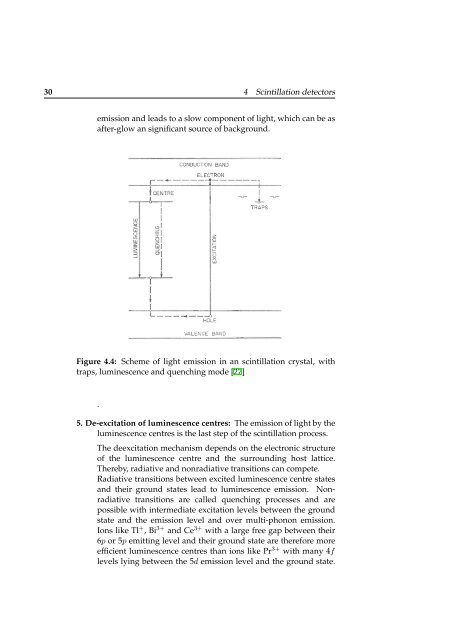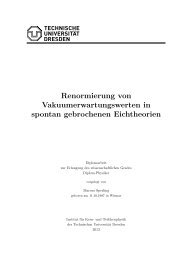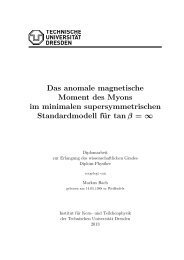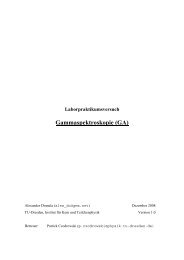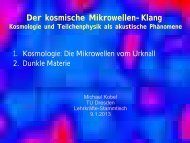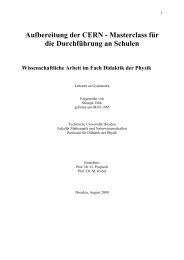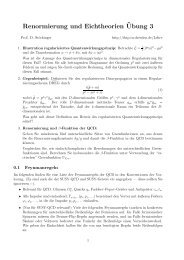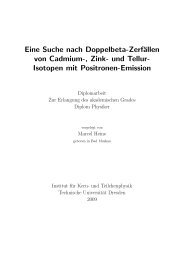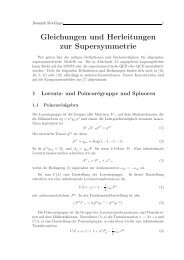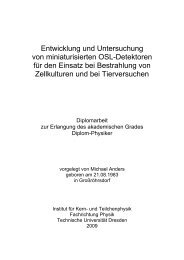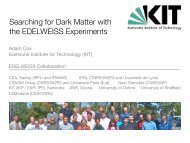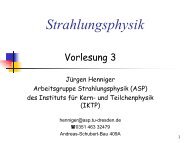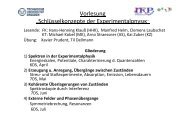a design study for a cobra upgrade to - Institut für Kern- und ...
a design study for a cobra upgrade to - Institut für Kern- und ...
a design study for a cobra upgrade to - Institut für Kern- und ...
Create successful ePaper yourself
Turn your PDF publications into a flip-book with our unique Google optimized e-Paper software.
30 4 Scintillation detec<strong>to</strong>rs<br />
emission and leads <strong>to</strong> a slow component of light, which can be as<br />
after-glow an significant source of backgro<strong>und</strong>.<br />
Figure 4.4: Scheme of light emission in an scintillation crystal, with<br />
traps, luminescence and quenching mode [27]<br />
.<br />
5. De-excitation of luminescence centres: The emission of light by the<br />
luminescence centres is the last step of the scintillation process.<br />
The deexcitation mechanism depends on the electronic structure<br />
of the luminescence centre and the surro<strong>und</strong>ing host lattice.<br />
Thereby, radiative and nonradiative transitions can compete.<br />
Radiative transitions between excited luminescence centre states<br />
and their gro<strong>und</strong> states lead <strong>to</strong> luminescence emission. Nonradiative<br />
transitions are called quenching processes and are<br />
possible with intermediate excitation levels between the gro<strong>und</strong><br />
state and the emission level and over multi-phonon emission.<br />
Ions like Tl + , Bi 3+ and Ce 3+ with a large free gap between their<br />
6p or 5p emitting level and their gro<strong>und</strong> state are there<strong>for</strong>e more<br />
efficient luminescence centres than ions like Pr 3+ with many 4f<br />
levels lying between the 5d emission level and the gro<strong>und</strong> state.


